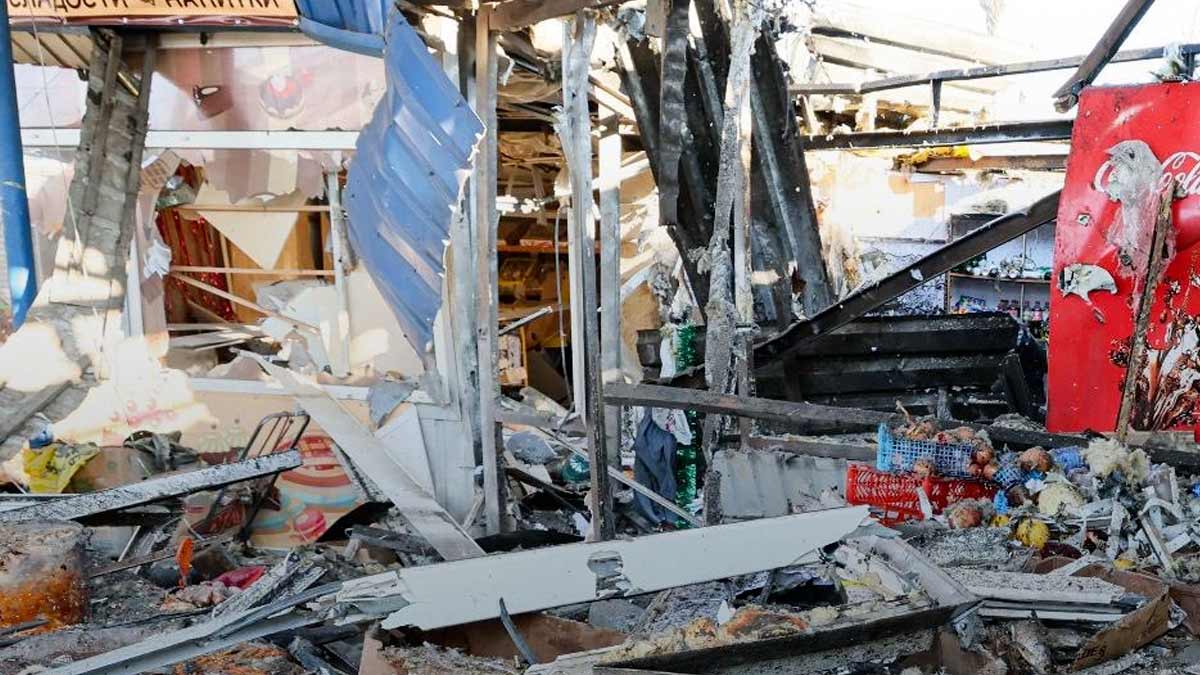[WBHG News 24] – After a shocking incident in the occupied city of Donetsk that killed 28 and wounded 30 in the market area in the Kirovs’kyi District, evidence that has emerged surrounding the attack raises doubts about Russia’s claim of Ukrainian involvement. Russian state media, along with the self-proclaimed governor of the Donetsk People’s Republic (DNR), Denis Pushilin, alleged that Ukraine was responsible for shelling the area using 152 mm and 155 mm artillery, leaving 18 of the wounded hospitalized.
A thorough analysis by our international analyst team casts doubt on the accusations, revealing a complex web of evidence that challenges the narrative quickly created by Russian authorities. Our team reviewed dozens of publicly available videos and images shared by Russian channels, state media, and propagandists and conducted an audio analysis of the attack itself while it was still in progress. Although a conclusive war crime assessment requires an on-site investigation, the publicly available information suggests that Ukraine was likely not responsible for the attack.
Two things that hampered the investigation was an apparent effort by Russian state media and propagandists not to share images of impact craters, which is crucial for splash analysis. Despite these efforts, our team successfully geolocated hits at four locations and identified three impact craters, including one that provided information on the direction of the attack. Another critical revelation was the absence of key details from Russian officials, such as pictures of an official investigation or recovered shrapnel. This is highly unusual compared to other incidents, and the attack scene was hastily cleaned up before any apparent detailed investigation was made. Additionally, the nature of the craters photographed appear to be 82 or 120-millimeter mortars and don’t align with the artillery rounds mentioned by occupation governor Pushilin.
The impact crater at the base of a tree on Lyashenka Street near the bus stop indicates the shells were fired from the west-southwest, making it highly improbable that Ukrainian artillery was involved. The closest Ukrainian-controlled area in that direction is Pobieda, 17 kilometers away and only 2.5 kilometers from the line of conflict. The closest safe area for artillery to operate is another 7.9 kilometers west, near the village of Illinka.
If Ukraine were responsible, the closest safe firing location would be 24.9 kilometers away, and even in Pobieda, the Russian D-20 152-millimeter howitzer would be at its absolute maximum range. At 24.9 kilometers, the M-777 or NATO standard self-propelled artillery pieces would be at or just beyond their standard range. Because Russian officials did not share any images of shrapnel, we have no way to authenticate the munition used.
Along with the impact crater at the base of the tree on Lyashenka Street, a video recorded during the attack provided critical information on the potential distance from the area attacked and the firing point. The Russian video shared on the popular Telegram channel Typical Donetsk captured the sound of outgoing rounds that impacted 2.5 and 4.25 seconds later. If the rounds were fired from M-777 artillery with a muzzle velocity of 870 meters per second, the maximum linear distance the round could travel is 3,700 meters, deep within the city of Donetsk itself. Factoring for the arc an artillery shell travels and the minimum possible range of the M-777, the distance drops to 2,300 meters. That’s an impossibly short distance for the rounds to have been fired by Ukraine.
The timing of the attack is also suspect, occurring while Russian Foreign Minister Sergey Lavrov was en route to a UN Security Council meeting, and the U.S. Congress remains poised to discuss continued military support for Ukraine.
The available evidence suggests that the origin of the attack was in a forested area between the Kirovs’kyi and Petrovs’kyi Districts, approximately 2,000 to 3,000 meters west of the market area. Immediate claims that any combatant committed a war crime should receive a thorough investigation before news agencies directly quote national officials and report the claims as pure fact. The intricacies of this investigation underscore the importance of a thorough and unbiased examination of available evidence by subject matter experts.
A copy of the full analysis and technical information is available for download.
